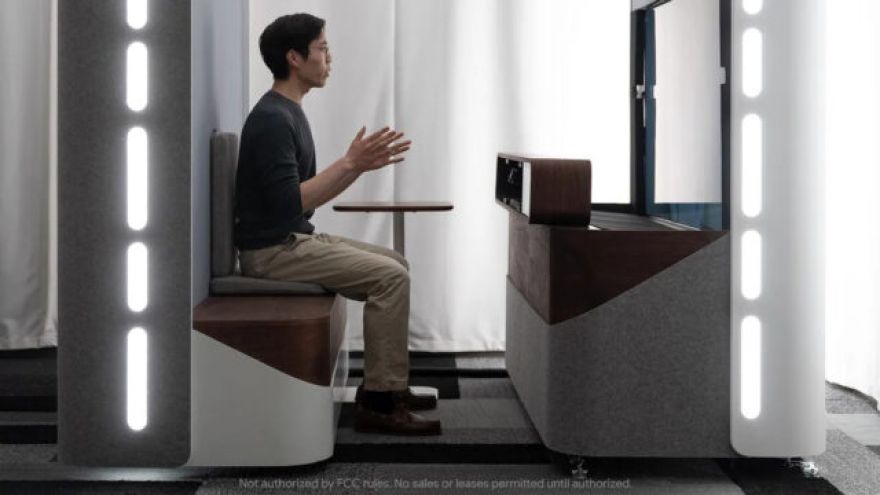
Google Shows Off Its Holographic 3D ‘Telepresence’ Platform
But what if you could feel like you were actually sitting across from your friend or family member—without having to traverse oceans or timezones? That’s the idea behind Google’s Project Starline, a holographic, three-dimensional “telepresence” platform that practically plops loved ones right in front of you.
Project Starline works by using more than a dozen cameras and sensors to scan approximately one cubic meter of space, in which you (and on the other end, the person you’re calling) sit.
Google first announced Project Starline last year at its Google I/O developer conference keynote. Now it’s testing the technology at a few of its corporate offices. CNET editor Scott Stein was invited to test Project Starline for himself. In his of the trial, Stein mentioned that the life-size, real-time video chat was jarring at first (if only because it’s unlike anything most of us have ever experienced), but that it eventually became second nature. “It felt…well, it felt like we were chatting at a coffee shop table,” he writes.
This sense of realism appears to have positive implications for the way people communicate. Google has reportedly that users experience heightened attentiveness, memory recall, and overall sense of presence when conducting conversations via Project Starline instead of a traditional video call. People display up to 40 percent more non-verbal behaviors like nods, eyebrow movements, and hand gestures, while also paying closer attention to their conversation partner and remembering the chat better after the fact.
The technology isn’t perfect, of course. Sometimes the tops of people’s heads look a bit jagged or fuzzy because they aren’t quite rendered properly, and the overall display resolution isn’t as crisp as some people would like. It also goes without saying that this isn’t something the average person will be able to use every day, thanks to the hefty setup: Users currently have to step into a booth, which houses both a seating area and a glass display surrounded by Project Starline’s many sensors. Still, for a platform that imitates the in-person experience without bulky headsets, Project Starline seems impressive.
Now Read: